Art Deco is an influential design style that emerged in the early 20th century, characterized by a combination of modernist and decorative styles. In architecture, Art Deco design is characterized by bold geometric forms, rich colors, and intricate patterns. It emphasizes symmetry and balance, often featuring ornamental motifs such as sunbursts, zigzags, and stepped forms.
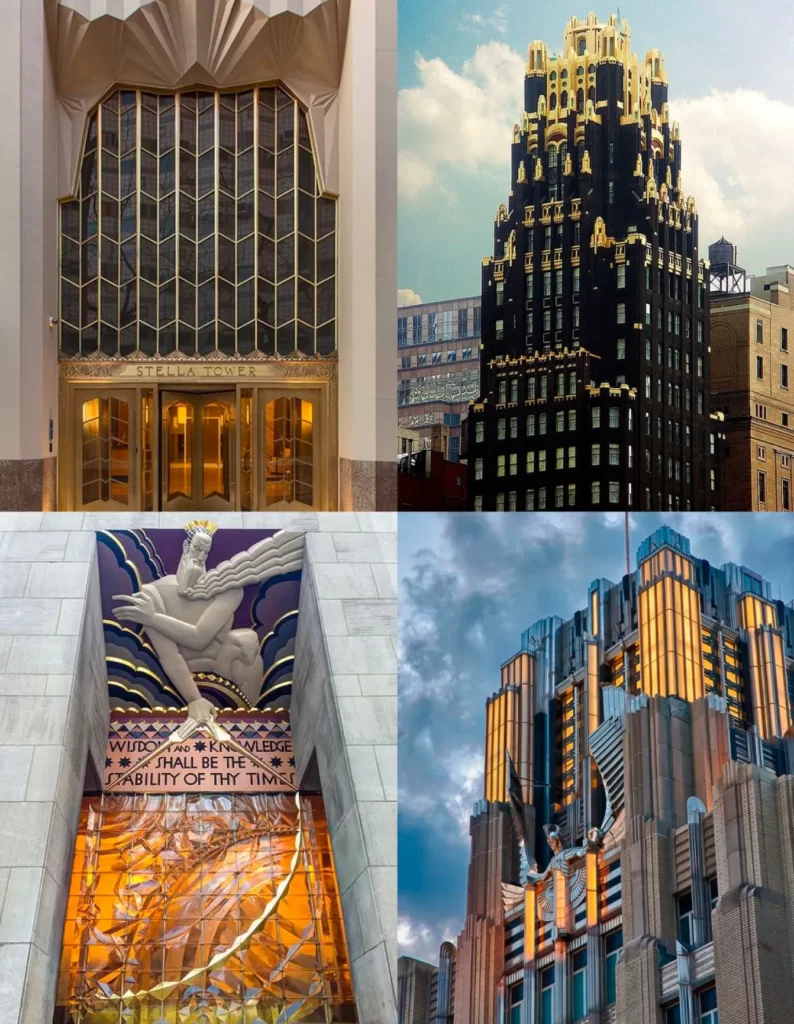
If you want to know about the staircase design or landscape garden or requirements for disabled persons in a building, please click the link.
Historical background and origins
Art Deco design emerged in the aftermath of World War I and gained popularity in the 1920s and 1930s. It was a response to the ornate and highly decorative styles of the 19th century, such as Art Nouveau, and the need for a more modern and streamlined aesthetic. Art Deco design was also influenced by the growing fascination with ancient cultures and their art, as well as technological advances such as the widespread use of electricity.
The term “Art Deco” comes from the 1925 Exposition Internationale des Arts Décoratifs et Industriels Modernes, held in Paris, which showcased the latest in decorative arts and design. The style quickly spread throughout Europe and the United States, becoming popular in architecture, fashion, and industrial design.
Importance of Art Deco design in Architecture
Art Deco design played a significant role in the development of modern architecture, influencing the design of buildings around the world. It was a departure from the more traditional styles of the past and reflected the changing attitudes towards technology, progress, and the future. Art Deco design in architecture often combined traditional materials such as stone and brick with newer materials such as steel and concrete, showcasing the potential of modern construction techniques.
Art Deco design was also important in the context of the time, as it was seen as a symbol of luxury and glamour during the economic prosperity of the 1920s and 1930s. Its popularity declined in the post-World War II era, but it continued to influence design styles in the decades that followed, and has experienced a resurgence in recent years.
1) Characteristics of Art Deco design in Architecture
i) Use of geometric shapes and patterns:
Art Deco design is characterized by the use of geometric shapes and patterns, often arranged in a symmetrical or repetitive manner.
Examples of common shapes and motifs include sunbursts, zigzags, chevrons, and stepped forms. These geometric elements are often combined with decorative details such as stylized flowers, foliage, and animal forms, creating a balance between modern and traditional styles.
ii) Emphasis on symmetry and proportion:
Symmetry and proportion are key elements of Art Deco design in architecture. Buildings are often designed with a sense of balance and harmony, with repeated elements and a clear sense of order. Facades may feature a central vertical axis with flanking elements, creating a sense of balance and stability.
iii) Bold use of color and contrast:
Art Deco design in architecture is characterized by a bold use of color and contrast. Buildings may feature contrasting colors and materials, such as black and white or shiny metal against matte surfaces. Bright, saturated colors such as red, blue, and gold are also commonly used, often in geometric or decorative patterns.
iv) Integration of new materials and technologies:
Art Deco design in architecture was also characterized by the integration of new materials and technologies, reflecting the advances of the time. Buildings often incorporated materials such as steel, glass, and concrete, which allowed for new forms and shapes to be created.
The use of lighting was also an important element of Art Deco design in architecture, with buildings featuring elaborate lighting schemes that highlighted their unique forms and details.
2) Famous examples of Art Deco architecture
i) Empire State Building:

The Empire State Building is an iconic example of Art Deco design in architecture, located in New York City. Completed in 1931, it was the tallest building in the world at the time and features a distinctive stepped form, with setbacks at various levels. The building’s facade is decorated with geometric patterns, including zigzags and sunbursts, and the lobby features marble floors and a stunning art deco ceiling mural.
ii) Chrysler Building:

The Chrysler Building, also located in New York City, is another famous example of Art Deco design in architecture. Completed in 1930, it features a distinctive stainless steel spire and ornamentation, including decorative eagles and a stylized sunburst at the top. The lobby is decorated with marble and murals, and the elevators feature intricate details and metalwork.
iii) The Hoover Dam:

The Hoover Dam, located on the border between Arizona and Nevada, is a massive concrete arch-gravity dam completed in 1936. It was designed in an Art Deco style, with decorative features such as terrazzo floors, bronze elevator doors, and colorful tile mosaics. The dam’s exterior also features decorative elements, including bas-relief sculptures of eagles and winged figures.
iv) The Waldorf Astoria Hotel:

The Waldorf Astoria Hotel in New York City is a luxurious Art Deco landmark, completed in 1931. The building features a distinctive limestone facade and ornate details, including intricate metalwork, decorative friezes, and elegant lobby murals. The hotel’s grand ballroom is also a notable example of Art Deco design, with its geometric patterns, mirrored walls, and elegant chandeliers.
3) Art Deco design in residential architecture
Art Deco design in homes emerged in the 1920s and 1930s and was characterized by a sleek, modernist style. Homes designed in the Art Deco style were often luxurious and featured rich materials and finishes. The style emphasized geometric shapes and bold colors, as well as streamlined forms and a sense of symmetry.
i) Use of Art Deco design elements in homes:
Art Deco design elements commonly used in homes include:
- Geometric shapes and patterns, such as zigzags, sunbursts, and stepped forms
- Bold use of color and contrast, including saturated colors and metallic finishes
- Streamlined and curved forms, including rounded corners and curved walls
- Integration of new materials and technologies, such as chrome, glass, and plastic
ii) Examples of Art Deco homes around the world:
There are many examples of Art Deco homes around the world, including:
- The Maison de Verre in Paris, designed by Pierre Chareau in 1932, features a striking facade of glass blocks and metal framing, as well as curved walls and furniture designed specifically for the space.

- The Streamline Moderne homes in Los Angeles, California, feature sleek, curved forms and a sense of movement inspired by transportation design, such as trains and airplanes.
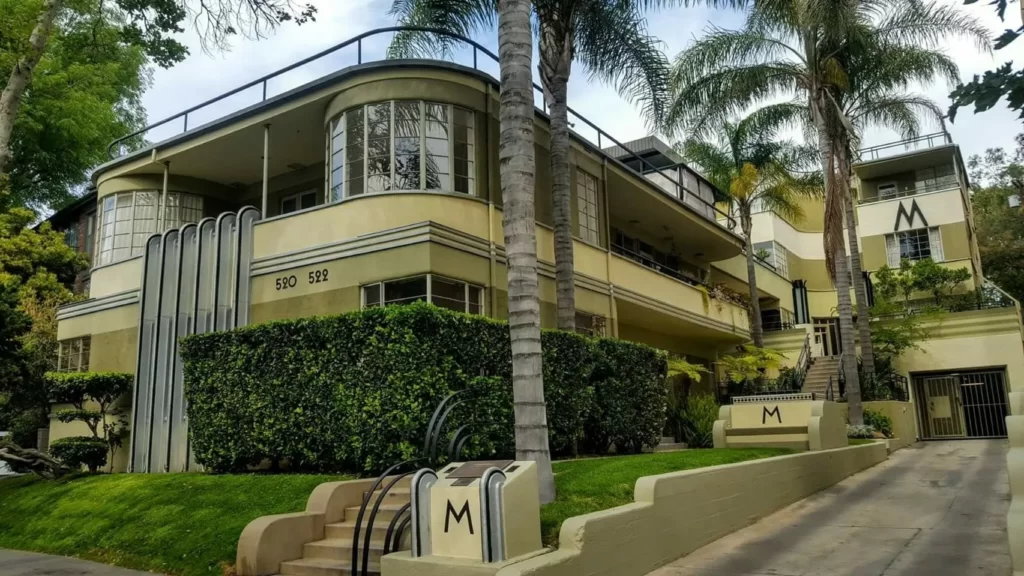
- The Eltham Palace in London, England, was renovated in the Art Deco style in the 1930s, with a bold use of color and pattern, including geometric tiles and decorative screens.

- The Villa Cavrois in Croix, France, designed by Robert Mallet-Stevens in 1932, features a modernist, streamlined design with strong vertical and horizontal lines, as well as a striking use of light and shadow.

4) The influence of Art Deco design on modern architecture
Art Deco design has seen a resurgence in popularity in contemporary architecture, with architects and designers rediscovering the style’s emphasis on bold shapes, rich finishes, and modernist sensibility. This has led to a renewed interest in Art Deco-inspired designs, especially in high-end commercial and residential buildings.
i) Examples of modern buildings with Art Deco influences
There are many examples of modern buildings that incorporate Art Deco design elements, including:
- The Fisher Building in Detroit, Michigan, is a landmark Art Deco skyscraper built in 1928, featuring a stunning marble-clad lobby, intricate metalwork, and rich decorative details.

- The Museum of the City of New York, renovated in 2020, features an Art Deco-inspired facade with a bold use of color and pattern, as well as modernist forms and materials.
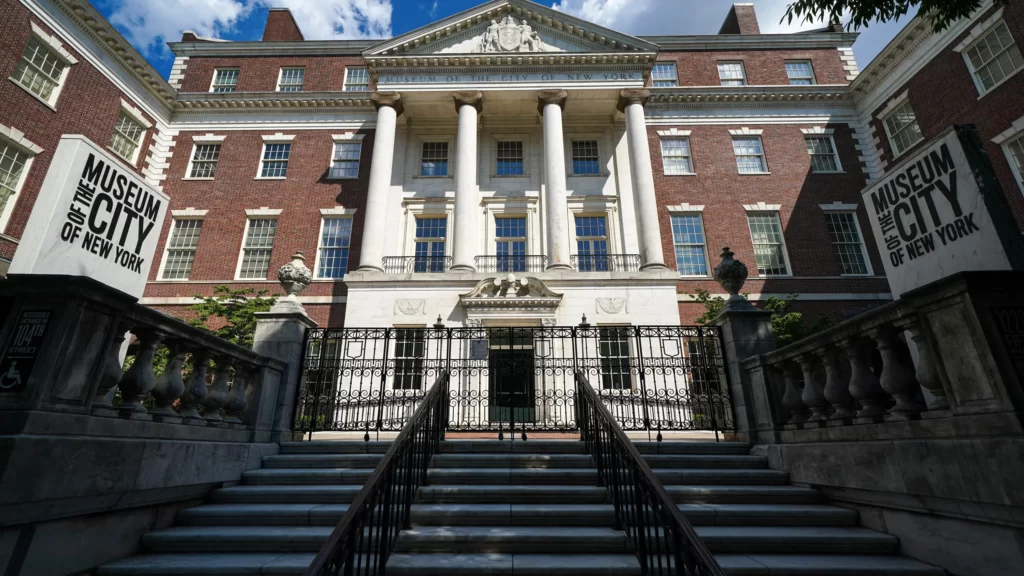
- The Fairmont Royal York Hotel in Toronto, Canada, built in 1929, is a notable example of Art Deco design in hospitality, with its luxurious finishes, curved forms, and ornate details.
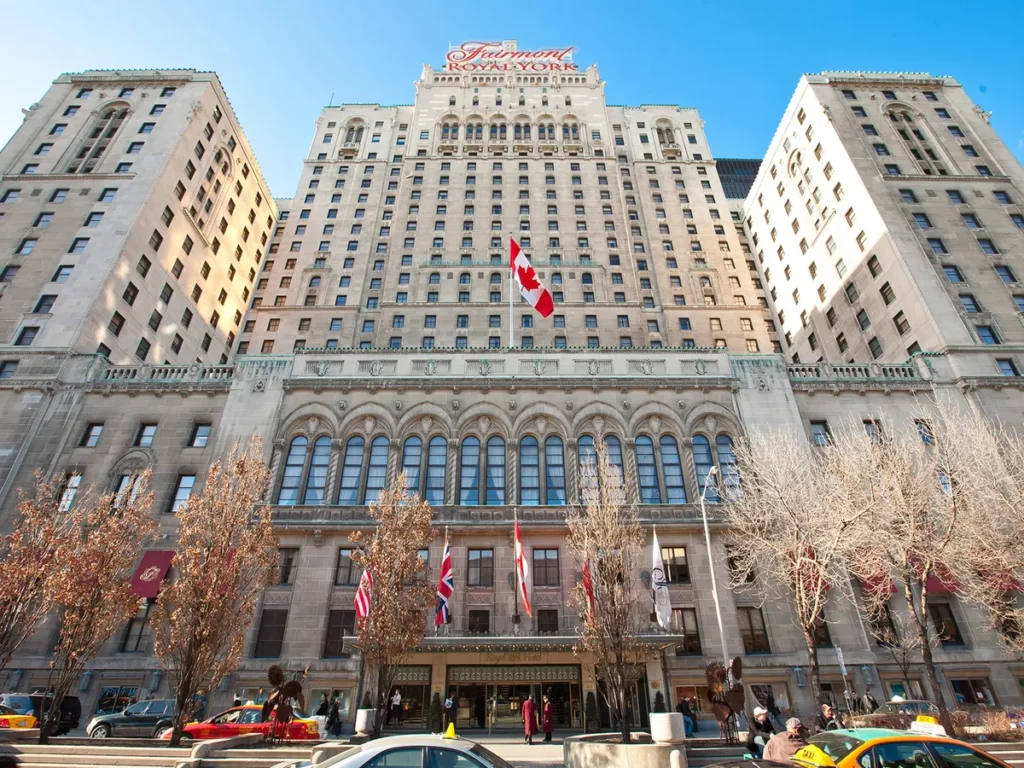
ii) Art Deco-inspired interior design
Art Deco design has also influenced interior design, with its emphasis on luxurious materials, bold patterns, and sleek modernist forms. Art Deco-inspired interiors often feature:
- Rich materials such as marble, brass, and velvet
- Bold geometric patterns, such as zigzags and chevrons
- A mix of curved and straight lines, creating a sense of movement and dynamism
- A bold use of color, often incorporating jewel tones and metallic finishes.
iii) Examples of Art Deco-inspired interiors include
- The Midland Hotel in Morecambe, England, designed in the 1930s, features a stunning Art Deco ballroom with a dramatic curved ceiling, intricate lighting fixtures, and bold patterns.

- The NoMad Hotel in New York City features an Art Deco-inspired interior design with luxurious materials and finishes, bold patterns, and a mix of curved and straight lines.

- The Trianon Palace Versailles Hotel in France features Art Deco-inspired design elements, including a striking lobby with marble floors, geometric patterns, and ornate metalwork.
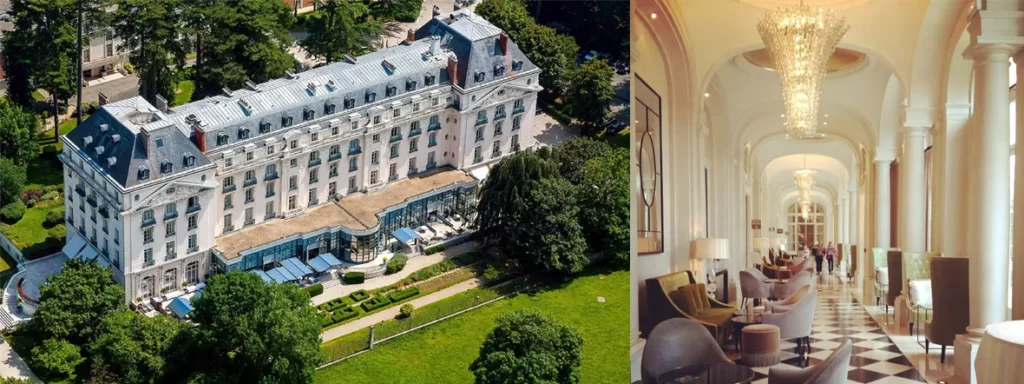
5) Art Deco design in commercial architecture
Art Deco design played a significant role in commercial architecture during the 1920s and 1930s, with its emphasis on modernism, luxury, and bold design. Art Deco commercial buildings were designed to impress and convey a sense of grandeur, often incorporating rich materials, dramatic lighting, and intricate detailing.
i) Use of Art Deco design elements in commercial buildings:
Art Deco design elements commonly used in commercial buildings include:
- Dramatic entrances, often featuring grand staircases and elaborate lighting
- Bold geometric shapes and patterns, such as chevrons and sunbursts
- The use of luxurious materials, such as marble, brass, and glass
- A sense of verticality, with the use of tall buildings and ornate spires
- The incorporation of modernist forms and technologies, such as streamlined designs and new materials like chrome and plastic.
ii) Examples of Art Deco commercial buildings around the world:
There are many examples of Art Deco commercial buildings around the world, including:
- The Rockefeller Center in New York City, designed in the 1930s, is a landmark complex of Art Deco skyscrapers, featuring dramatic entrances, bold geometric patterns, and a mix of modernist and historicist design elements.

- The Daily Express Building in Manchester, England, built in 1939, features a striking Art Deco facade with a stepped design, dramatic lighting, and intricate metalwork.
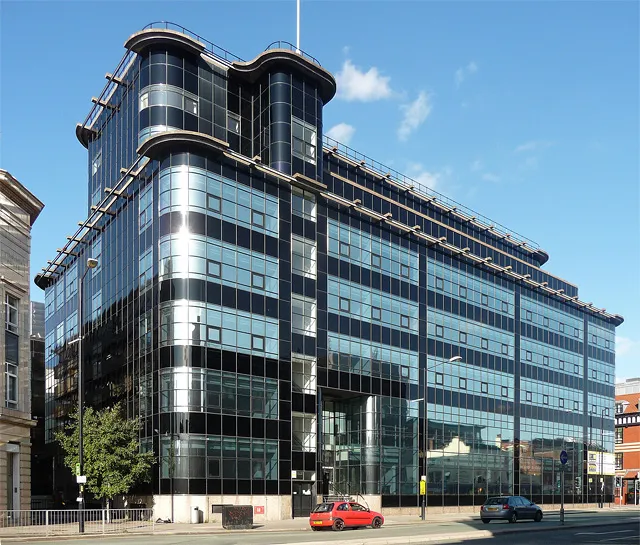
- The Eastern Columbia Building in Los Angeles, California, is a notable example of Art Deco design in retail and residential architecture, with its bold colors, dramatic entrance, and streamlined forms.
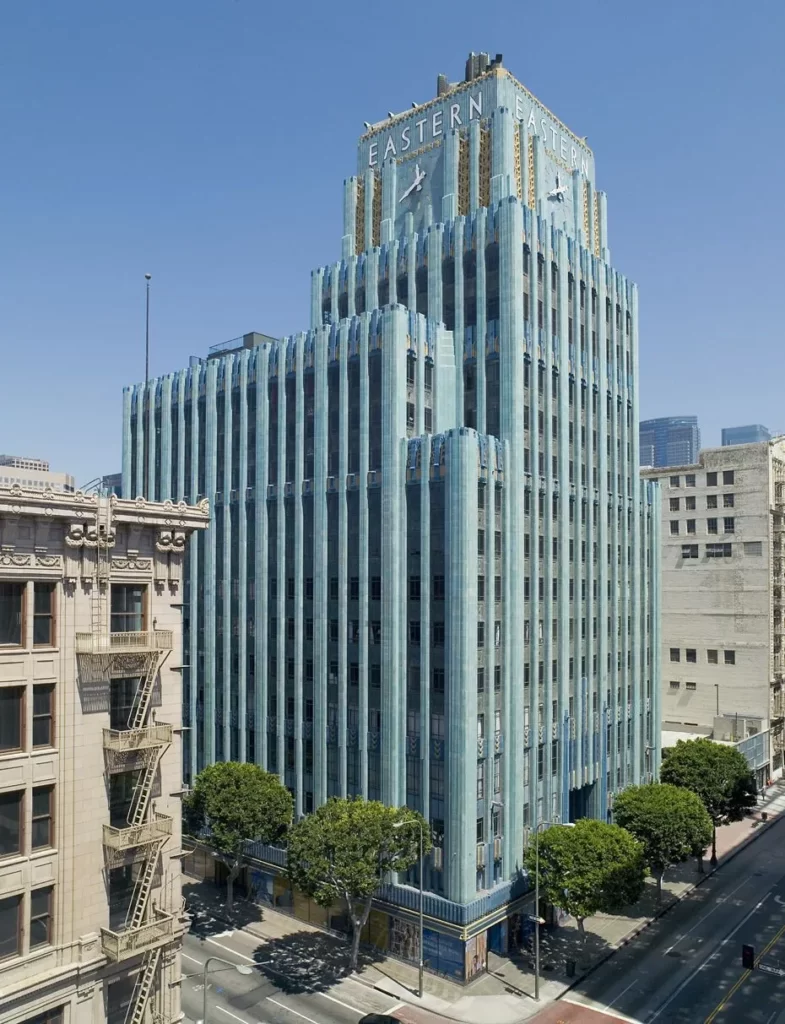
- The Palacio de Bellas Artes in Mexico City, designed in the 1930s, is a stunning Art Deco theater and cultural center, featuring a dramatic domed roof, intricate mosaics, and ornate metalwork.
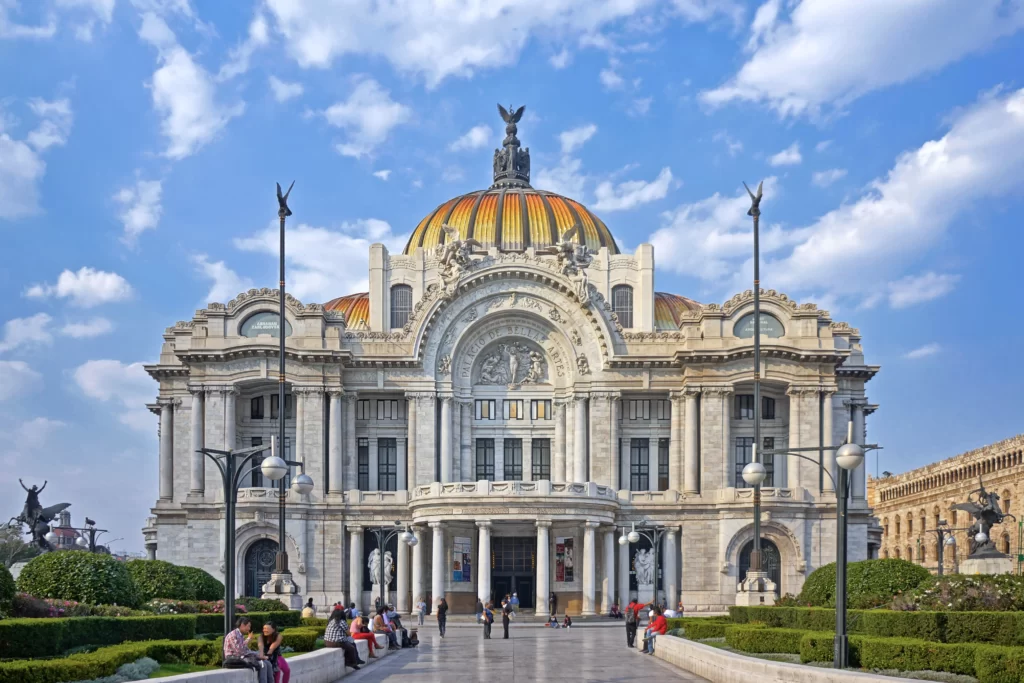
6) Art Deco design in cultural architecture
Art Deco design played a significant role in cultural architecture during the 1920s and 1930s, with its emphasis on modernism, luxury, and bold design. Art Deco cultural buildings were designed to inspire and convey a sense of artistic sophistication, often incorporating rich materials, intricate detailing, and dramatic lighting.
i) Use of Art Deco design elements in cultural buildings:
Art Deco design elements commonly used in cultural buildings include:
- Elaborate facades with ornate detailing, often featuring intricate mosaics, sculptures, and metalwork
- Dramatic lighting, often used to highlight architectural features and create a sense of grandeur
- The use of luxurious materials, such as marble, bronze, and gold leaf
- The incorporation of modernist forms and technologies, such as streamlined designs and new materials like glass and concrete
- The use of geometric shapes and patterns, often in symmetrical arrangements.
ii) Examples of Art Deco cultural buildings around the world:
There are many examples of Art Deco cultural buildings around the world, including:
- The Radio City Music Hall in New York City, designed in the 1930s, is a stunning Art Deco theater and entertainment venue, featuring a grand foyer with intricate metalwork and a dramatic auditorium with stunning lighting and acoustics.

- The Royal Ontario Museum in Toronto, Canada, built in the 1930s, features an Art Deco facade with intricate detailing, a soaring central tower, and a mix of modernist and historicist design elements.
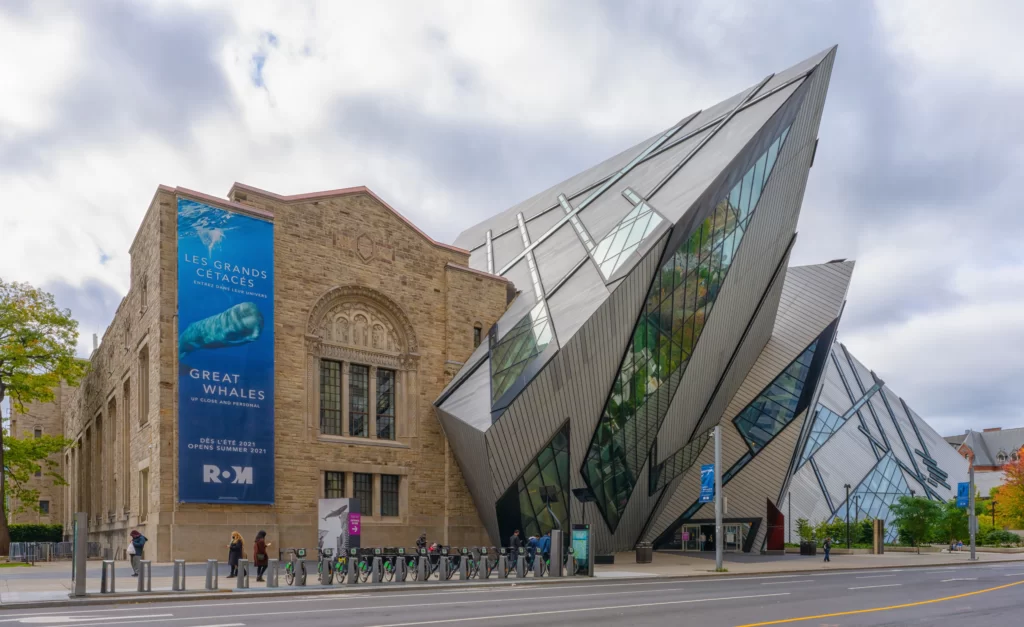
- The National Museum of Anthropology in Mexico City, designed in the 1960s, incorporates Art Deco design elements with its use of bold geometric shapes and patterns, intricate metalwork, and luxurious materials such as marble and bronze.
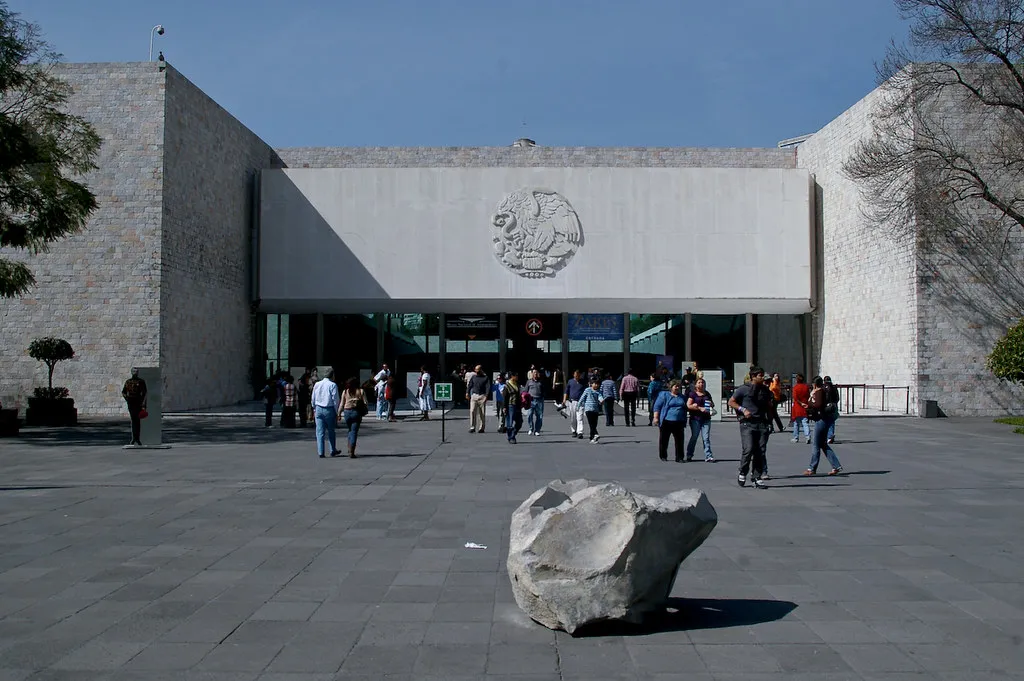
- The Hoover Theatre in San Jose, California, built in the 1930s, is a striking Art Deco cultural building featuring a stepped facade, intricate metalwork, and a dramatic marquee.
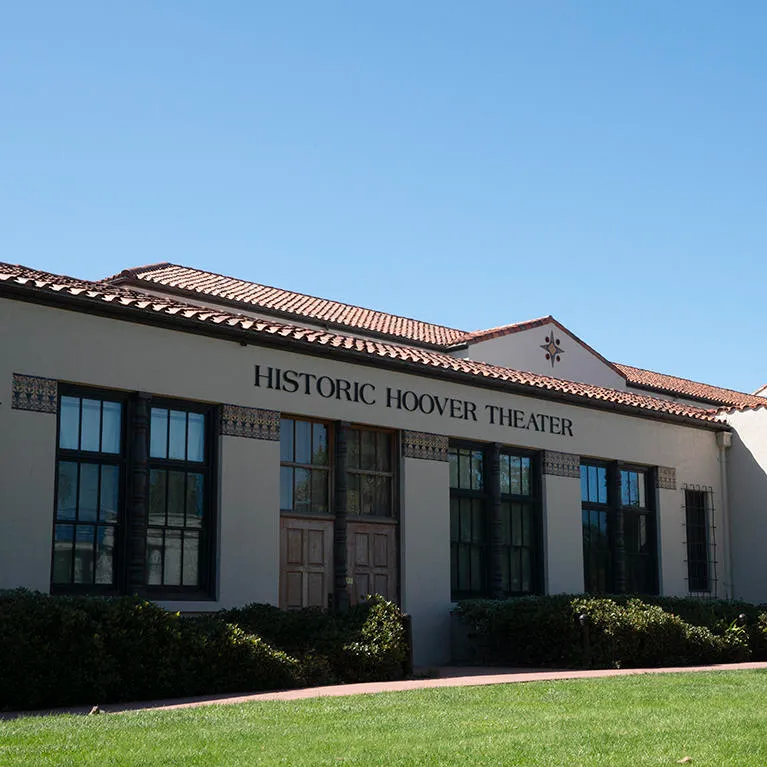
7) Preservation of Art Deco architecture
Challenges in preserving Art Deco buildings:
Preserving Art Deco architecture can be challenging due to several factors, including:
- Aging and deterioration of building materials
- Changes in building codes and zoning laws
- Lack of funding for restoration and maintenance
- Lack of public awareness and appreciation for Art Deco architecture
- Pressure to demolish older buildings and replace them with new, modern structures.
Importance of preserving Art Deco architecture:
Preserving Art Deco architecture is important for several reasons, including:
- Art Deco buildings are significant cultural and historical landmarks that represent a unique period in architectural history.
- Art Deco architecture represents the intersection of art, design, and technology during a period of significant social and cultural change.
- Art Deco buildings contribute to the character and identity of cities and towns around the world, serving as symbols of civic pride and community history.
- Art Deco buildings can serve as important economic assets, attracting tourism and generating revenue for local businesses.
Preservation efforts around the world:
There are numerous preservation efforts underway around the world to protect and restore Art Deco buildings, including:
- The Art Deco Society of New York, which works to preserve and promote Art Deco architecture and design in the city.
- The Miami Design Preservation League, which works to preserve and promote Art Deco architecture in Miami Beach, Florida.
- The Art Deco Trust in Napier, New Zealand, which oversees the preservation and restoration of the city’s Art Deco architecture.
- The Mumbai Art Deco Heritage, which works to preserve and promote the city’s Art Deco architecture and design heritage.
8) Conclusion
Art Deco design was a significant movement in architectural history that emerged during a time of significant social, cultural, and technological change. Art Deco design principles emphasized modernism, luxury, and bold design, incorporating geometric shapes, symmetry, and dramatic lighting. Art Deco architecture can be seen in a variety of building types, including homes, commercial buildings, and cultural institutions.
Despite emerging almost a century ago, Art Deco design continues to influence contemporary architecture and design. Its emphasis on modernism, luxury, and bold design remains relevant, and its influence can be seen in the work of architects and designers around the world. Moreover, the ongoing efforts to preserve and promote Art Deco architecture serve as a reminder of the enduring legacy of this important architectural movement.